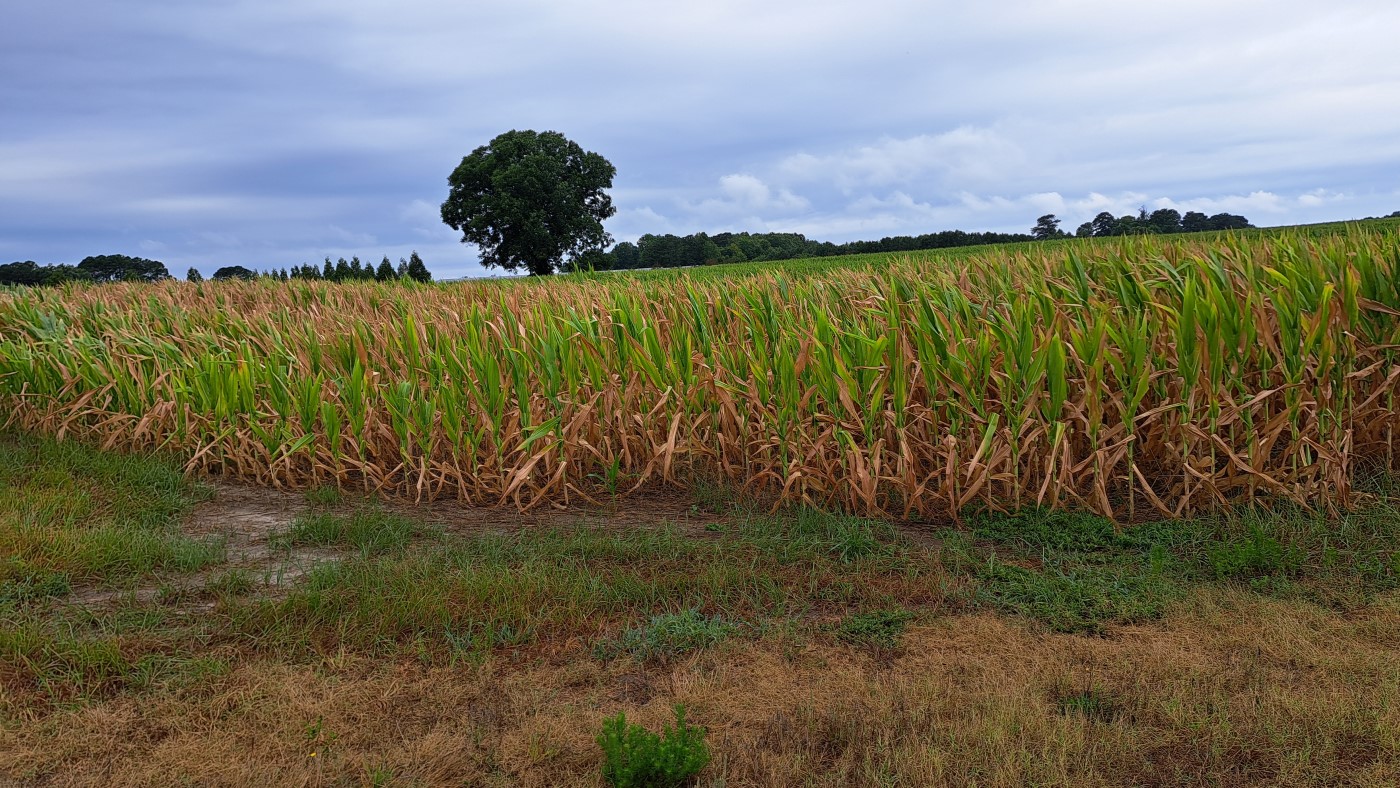A flash drought has already damaged much of the corn crop in North and South Carolina to the point of no return. But the market has not reacted. SFN market analyst Brooks Schaffer with Pinnacle Marketing explains why.
“The southeast swings above its weight on the demand side. We’re one of the biggest users of corn, really, anywhere in the world, with all the livestock that we feed. But as far as production, we don’t move the needle very much on production. Our comparative advantage is that we can sell our crop for a higher price, but we don’t affect the world price or the Chicago price very much. So when we face a situation like this, where we have a shortfall, where we have production issues, it doesn’t move the market very much in Chicago. The local price will be affected in the basis. But as far as the Chicago price, it doesn’t really take note very much of production issues that we have down here.”
Schaffer says there’s another part of the country to watch that will probably have a greater impact on the markets.
“We’re far from having a crop made in the Midwest as well. While the condition ratings are above average right now, there are production issues in the western belt. They’re having too much rain in the eastern belt there dry, but that’ll move the market more than than what what’s happening in the southeast.”
Some farmers were reading the tea leaves and saw an opportunity with increasing tobacco acres this year, but with the worsening drought in the Carolinas, Schaffer says that may not pay off now.
“We’re talking a little out of my area of expertise. But I do watch the tobacco market, and the market has been strengthening the last couple years, and we are big producer of tobacco in the world market, and that will affect the world price on issues that we have in the southeast on tobacco.”
Rain in the western Corn Belt is also something to monitor going forward.
“Specifically, we’ve had historic flooding in northern Iowa and southern Minnesota and parts of the Dakotas. They’ve had excessive rainfall, really, through starting this spring, and through planning. And you know that of particular note, because the USDA report on Friday, where USDA added a million and a half acres for corn. A lot of those acres were expected to come from the areas that have been hardest hit by the rain, with too much rain. So, we, you know, there’s, there’s questions about whether those acres were actually able to get planted, and how many of those acres are going to be failed.”


